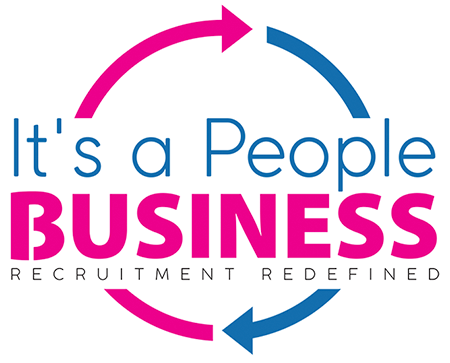Best Practices for Small Businesses
Best Practices for Small Businesses

Welcoming new employees to your small business can be an exciting and nerve-wracking experience. On one hand, you're excited to have new talent join your team and help grow your business. On the other hand, you want to make sure that you provide a warm and welcoming environment that sets them up for success. As a small business owner or manager, it's important to establish an onboarding process that makes new hires feel comfortable, appreciated, and confident in their new role.
Read More: Mastering Talent Acquisition: Strategies and Best Practices for Recruiting Top Candidates
Whether you're a new small business owner or a seasoned manager, this post will provide valuable insights and actionable tips for creating an onboarding process that will make new hires feel welcomed and valued. We'll discuss important steps like preparing for the new employee's arrival, introducing them to the team and company culture, providing necessary training and resources, and setting clear expectations for their role. By following these best practices, you can ensure that your new employees start off on the right foot and are set up for success in their new position.
In this blog post, we'll be discussing best practices for welcoming new employees to your small business. From creating a comprehensive onboarding plan, to assigning a mentor or buddy, to providing a clear understanding of company culture, we'll cover it all. We'll also explore the benefits of having a robust onboarding process, such as increased employee retention and productivity. So, let's dive into the details and learn how to create an effective welcoming process for your small business.
1. Introduce them to the team.
1. Introduce them to the team.

When a new employee joins your small business, it's important to make them feel welcome and valued from the very first day. One of the best practices for welcoming new employees is to introduce them to the team. This can help to break the ice and make the new employee feel more comfortable in their new environment. Start by scheduling a meeting with the team and the new employee to make introductions.
Set the right tone.
Set the right tone.
Encourage team members to share a little bit about themselves and their roles within the company. This will not only help the new employee to learn everyone's name and face, but also to understand how each team member contributes to the overall success of the business. Remember, a warm welcome sets the tone for a positive and productive work experience.
Read More: The Future of Work: Predictions for Online Recruitment in the Next Decade
2. Provide a welcoming orientation.
2. Provide a welcoming orientation.

Providing a welcoming orientation is a crucial step in the process of welcoming new employees to your small business. This is an opportunity to introduce them to the company culture, values, and expectations. A well-designed orientation can set the tone for a positive work experience and help new employees feel comfortable and confident in their new role.
Read More: Mastering the Main Stages of Any Recruitment Discussion: A Practical Guide for Employers
Orientation is key to the onboarding process.
Orientation is key to the onboarding process.
A successful orientation should cover a range of topics, from company policies and procedures to employee benefits and resources. It's important to ensure that new employees have all the information they need to get started, so be sure to provide them with a comprehensive overview of the company and its operations. A welcoming orientation is a key component of the overall onboarding process, and can help new employees feel valued and integrated into the team.
3. Assign a mentor.
3. Assign a mentor.

Assigning a mentor can be a crucial step in welcoming new employees to your small business. A mentor can provide guidance, support, and help to integrate the new employee into the company culture and workflow. It's important to choose a mentor who has experience in the same department or role as the new employee to ensure an effective mentorship.
Make new employees feel welcomed and supported.
Make new employees feel welcomed and supported.
The mentor should be someone who is approachable, patient, and willing to take the time to answer questions and provide feedback. A good mentor can also help the new employee establish goals and provide constructive feedback on their progress. By assigning a mentor, you can help new employees feel welcomed and supported, which can lead to a smoother onboarding process and increased job satisfaction.
4. Set clear expectations and goals.
4. Set clear expectations and goals.

Setting clear expectations and goals is crucial when it comes to welcoming new employees to your small business. This helps them understand what is expected of them and how they can contribute to the company's success. Clearly defining job responsibilities, performance metrics, and company values will help new employees feel more confident and comfortable in their new role. Additionally, setting achievable goals for employees can motivate them to work harder and contribute more to the company.
Provide employees with resources needed to succeed.
Provide employees with resources needed to succeed.
Make sure to communicate these expectations and goals clearly during onboarding and check in with employees regularly to ensure they are on track and have the resources they need to meet their goals. This will not only help new employees succeed, but also demonstrate your commitment to their development and growth within the company.
5. Offer ongoing support and feedback.
5. Offer ongoing support and feedback.

As a small business owner, it's crucial to establish a welcoming and supportive environment for new employees. One way to achieve this is by offering ongoing support and feedback throughout their onboarding process and beyond. This can include assigning a mentor or buddy to help them navigate their new role, scheduling regular check-ins with their manager to discuss their progress, and providing opportunities for continued learning and development.
Increase job satisfaction and retention rates.
Increase job satisfaction and retention rates.
By demonstrating a commitment to their success and growth, you can help new employees feel valued and invested in the company's mission. This, in turn, can lead to increased job satisfaction and retention rates. As part of your overall strategy for onboarding new hires, it's important to incorporate ongoing support and feedback as a key element.
Conclusion
Conclusion
Welcoming new employees is an essential step in building a positive and productive workplace culture. By implementing these best practices for small businesses, you can ensure that your new hires feel valued, supported, and engaged from day one. Remember, a warm and thorough welcome sets the tone for the entire employee experience, so invest the time and effort to do it right. Your new employees will thank you, and your business will benefit from more motivated, loyal, and successful team members.
Read More: The Benefits of Working with a Flat Fee Recruiter
Reach out to It's a People.Business for expert guidance and support in implementing these best practices. Our team of recruitment professionals can help you develop a cost-effective and efficient hiring strategy that aligns with your business goals. Contact us today to learn more and take the first step towards building a strong and talented team for your small business.
